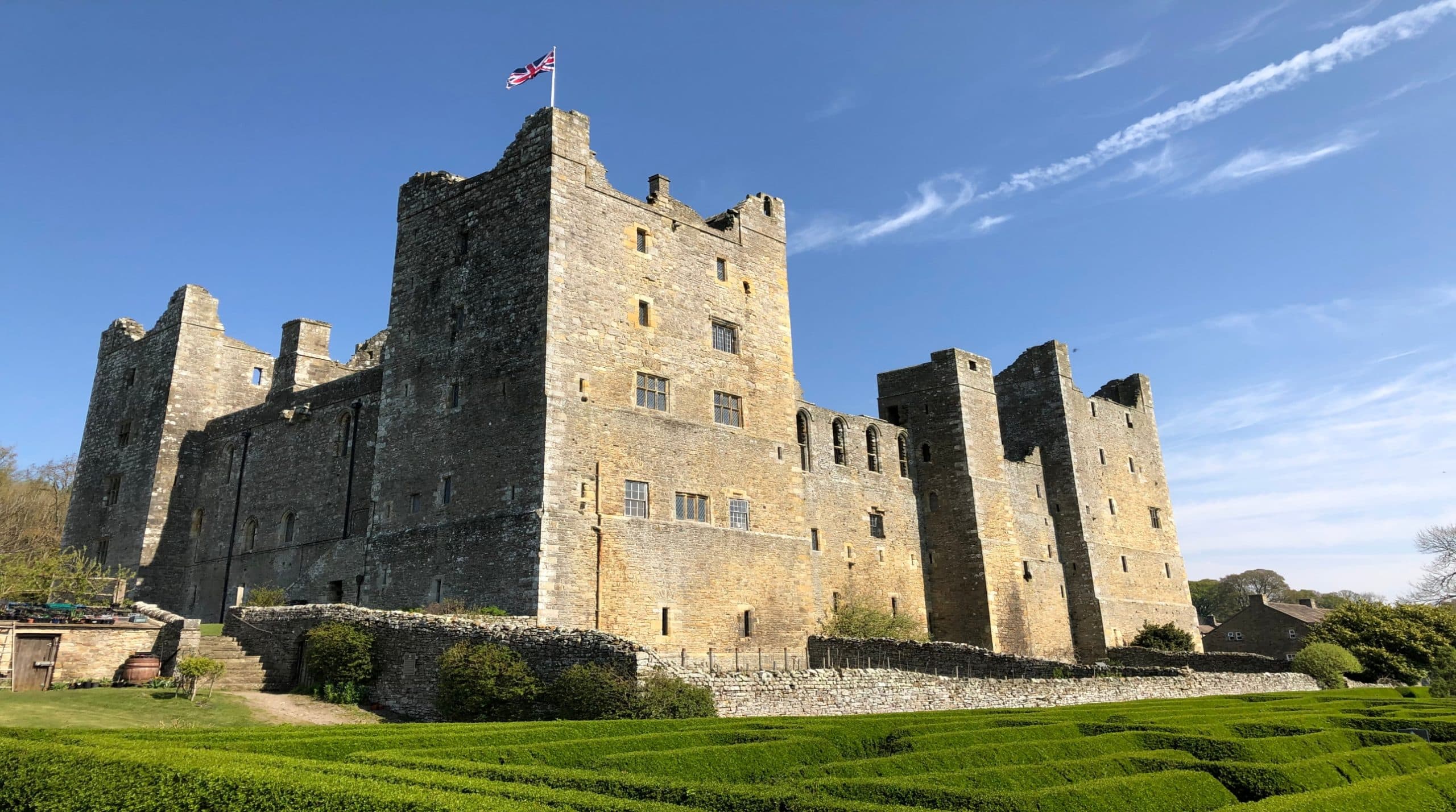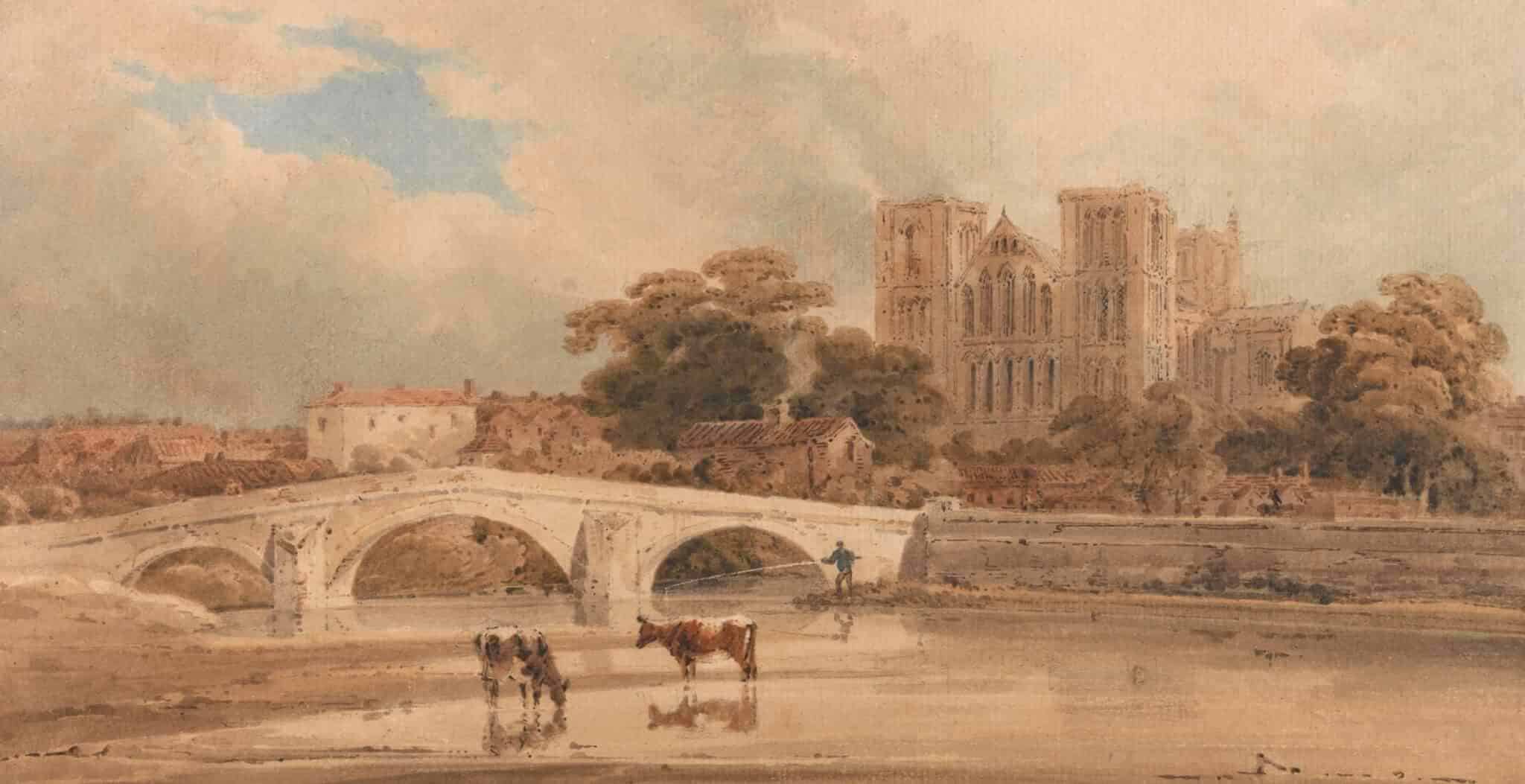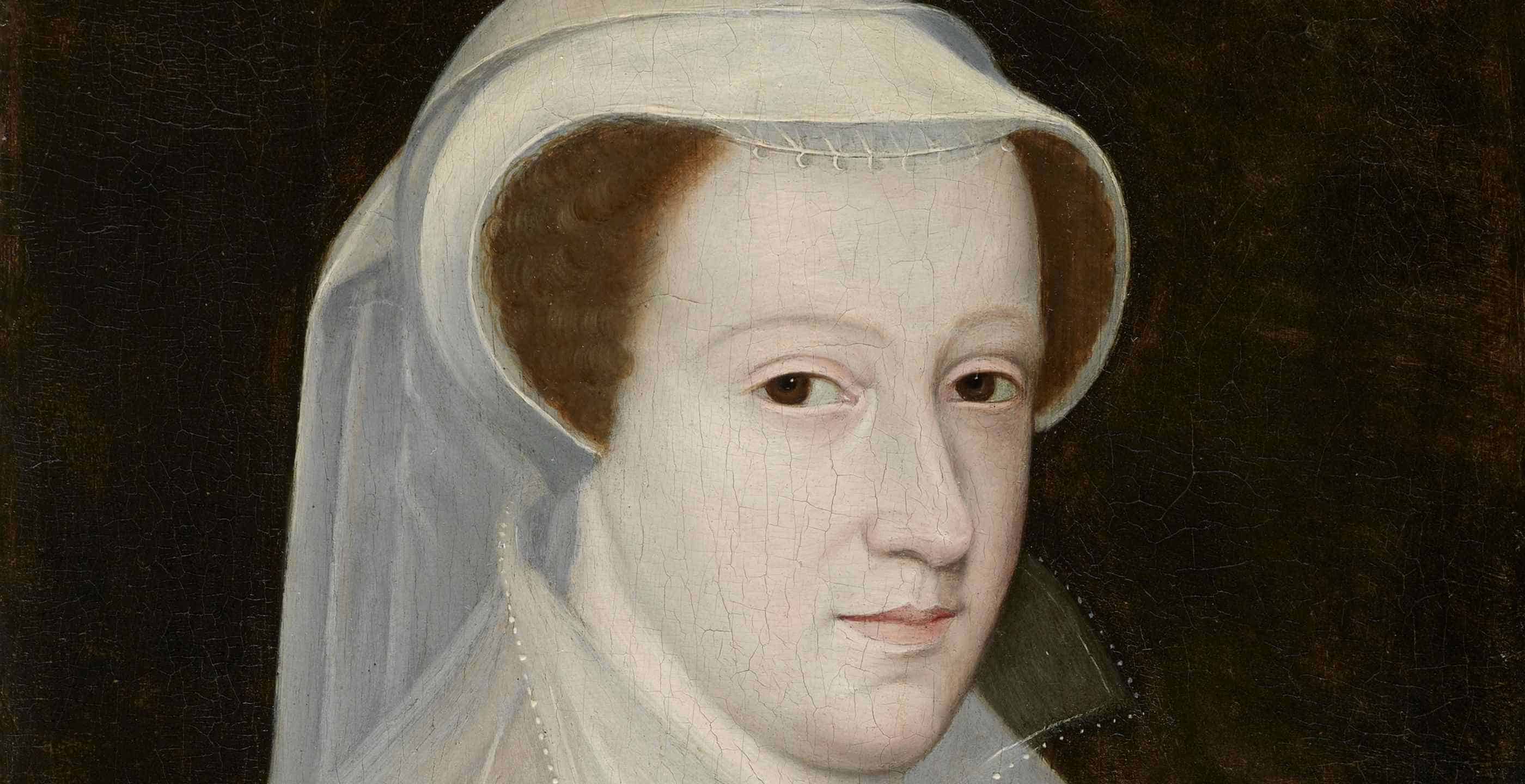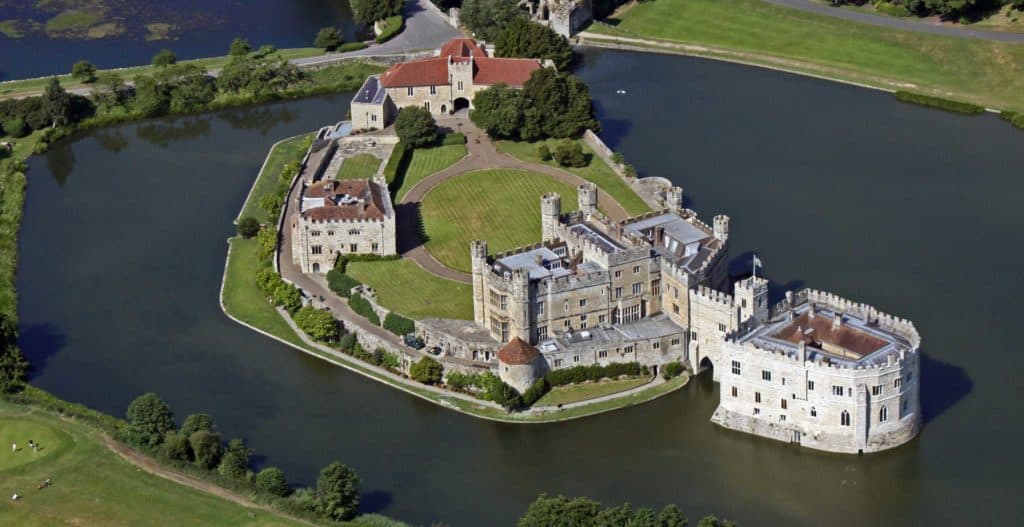Telephone: 01969 623981
Website: https://www.boltoncastle.co.uk/
Owned by: Baron Bolton, of Bolton Castle in the County of York.
Opening times: Open daily from 10.00 – 17.00 from April – October. Contact the castle directly as dates change annually. Entrance charges apply.
Public access: A Scheduled Ancient Monument, the castle is not easily accessible for those with reduced mobility due to spiral stairs and uneven surfaces. Dogs are not allowed in the grounds or the castle
A largely intact 14th century castle which was built between 1378 and 1399 by Sir Richard le Scrope, Chancellor to Richard II. The Scrope name was long known as an influential one in the north of England and along the Anglo-Scottish border. The family may have begun its rise to power under an ancestor known as Richard Fitzscrob, who constructed Richard’s Castle in Herefordshire as early as 1050. Fitzscrob was one of a group of Normans who arrived in England with Edward the Confessor’s nephew, and who were later expelled by the Confessor, only to return with William I. This would make the Scropes one of the oldest established Norman families in Britain and by the 14th century they were powerful and wealthy.
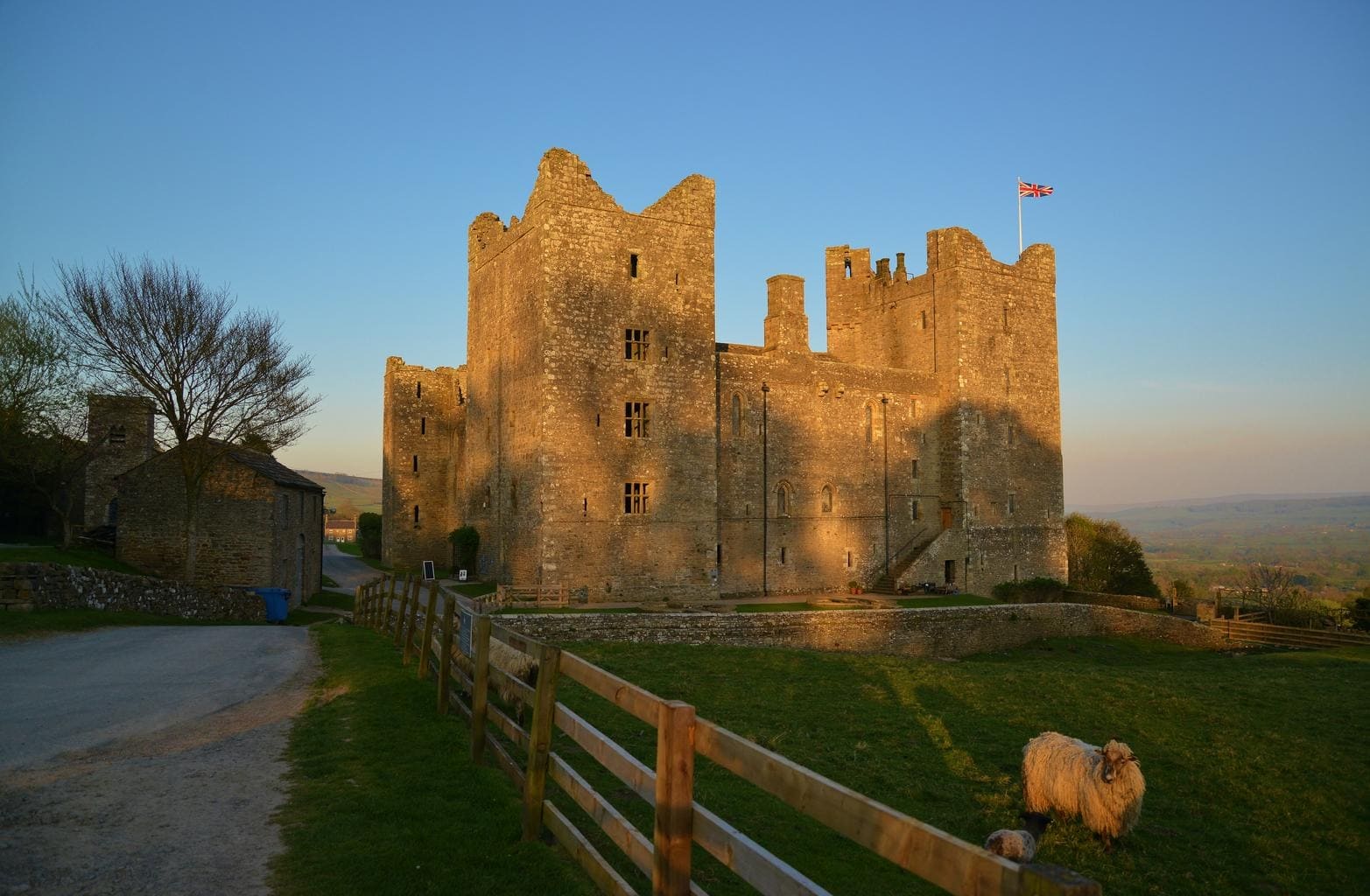
Sir Richard le Scrope made a contract to build the east range and towers with Johan Lewyn, a master mason, in 1378. Richard le Scrope then received a licence to crenellate at Bolton in 1379, by which time it is believed the castle was virtually complete. The total cost of the construction has been estimated at 18,000 marks, a phenomenal sum even though the family clearly had access to money. Bolton is a copybook example of a quadrangular castle with impressive towers at each corner. It is very typical of the period, although the rectangular towers do not extend far beyond the curtain walls. The castle was built with defence in mind, with machicolations enabling objects to be dropped onto attackers below. Comfortable private apartments were situated on the upper floors of each tower, and the internal access doors to these were each protected by a portcullis. The grand accommodation was clearly ahead of its time too, as John Leland later noted the clever way in which smoke was carried away from the hearth by “tunnels through the walls”.
This combination of security with comfortable living quarters meant that Bolton Castle was deemed an appropriate location for Mary, Queen of Scots to be imprisoned after her defeat at the Battle of Langside in 1568. It is generally believed that Mary, along with her retinue of 51 knights, servants and ladies-in-waiting stayed in apartments in the south-west tower. Free to wander the grounds, she often went hunting. It was here that she also learned to speak English, as she previously only spoke French, Latin and Scots.
